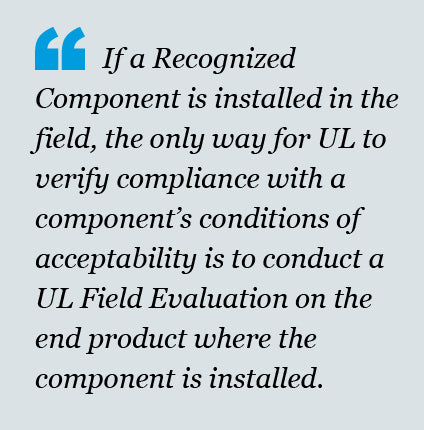
At Docking Drawer, we're proud to be the market leader of in-drawer electrical outlets. Our commitment to charging and powering today's connected lifestyle is backed by rigorous safety standards. Offering a full array of solutions, all outlets are electrically certified by a Nationally Recognized Testing Laboratory (NRTL).
Each Docking Drawer outlet is ETL-certified or UL-listed, ensuring compliance with UL or ETL standards. But we get a lot of questions about what that means. Today, we'll explain in plain English the difference between being ETL-listed and UL-listed.
Historical Background and Certification Processes
The Edison Testing Laboratories (ETL) trace back to Thomas Edison’s Lamp Testing Bureau, evolving over time to become a key player in electrical safety. Today, as part of Intertek, ETL continues its legacy of ensuring product safety.
The ETL certification process includes rigorous testing for safety, such as ensuring plastics are self-extinguishing, and wires are made from fire-rated materials. Moreover, ETL conducts ongoing surveillance to ensure continuous compliance with safety standards.
Meanwhile, the Underwriters Laboratories (UL) develops standards and tests products against these benchmarks. UL's dual role as both a standard-setting body and a testing laboratory gives it a unique position in shaping safety benchmarks in the industry. With over 1500 safety standards developed by UL, it plays a crucial role in defining safety and compliance measures globally.
Electrical Certifications in Plain English
ETL and UL are both Nationally Recognized Testing Laboratories (NRTLs) which are independent laboratories recognized by the Occupational Safety and Health Administration (OSHA). They are both internationally accredited electrical testing laboratories capable of testing to a variety of standards, including UL962a and CSA C22.2 (Canada).
Our own products are tested at Intertek testing laboratories, which also use the ETL mark as their certification mark or symbol of approval.
Intertek is likewise an independent NRTL recognized by the OSHA. These testing labs conduct a rigorous certification process, examining products to the specifications of product safety codes. In other words, products are tested for their intended use. If they can't pass the dedicated standards, they are not compliant.
What’s the Difference between ETL and UL Listings?
As far as regulatory approval goes, there is no difference between an ETL listing and UL listing. Inspectors treat them equally as they're both approved by the US Government as NRTLs.
That said, UL standards include an additional classification of marks called UL Recognized. This safety certification is intended for components installed inside of finished and listed devices. UL intends for recognized components to be specified and installed by technical people in a factory environment. They are not intended to be used and installed in the field.
Perceptions and Stringency in Testing

While both ETL and UL adhere to the same safety risk standards, there is a perception in some circles that ETL is less stringent in its testing compared to UL. This perception might influence a company's decision on which certification to pursue, although it's important to note that both certifications are rigorous and respected in the industry. Unlike UL, ETL does not develop its own standards but follows those established by UL.
This difference in approach between UL and ETL is crucial for businesses to understand when choosing a certification body. Both UL and ETL are considered suitable labs for testing products against established safety standards.
Docking Drawer's Commitment to Safety Standards
Obtaining UL or ETL certification is a significant investment, often involving substantial costs. This process includes steps like initial factory inspections and meeting specific certification agreements. Once certified, products can display the ETL or UL mark.
These marks are a testament to the product's compliance with safety standards and can be displayed in various forms, such as adhesive labels or metal nameplates.
At Docking Drawer, our UL certification and ETL certification prove that we're in compliance with accepted national standards (UL 962a and CSA C22.2 No. 21). And for our friends in Canada, our USB-ONLY outlet configurations are ETL-listed for use in the US and Canada. The Blade (1514-120) outlet with 4 USB-A ports, and the Blade Duo (1514-222) outlet with 8 USB-A ports, will stay energized and charge devices when the drawer is closed.
Our Blade Series outlets with AC outlet configurations — when paired with our Safety Interlock Outlet with Blade Limit Switch — are ETL-listed for use in Canada. The Safety Interlock Outlet with Blade Limit Switch senses a drawer's position and de-energizes the outlet when the drawer begins to close, satisfying the requirement to de-energize AC outlets within cabinets in Canada.
Ultimately, the Authorities Having Jurisdiction (AHJ) has the final say on whether an installation meets the requirements of the Canadian Electrical Code.
Find Out More
At Docking Drawer, we believe in being transparent with our customers. That's why we make our certifications available for anyone to read. Find our ETL certification here.
Do you still have questions about our outlets? Contact us today.

